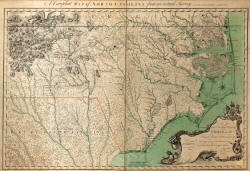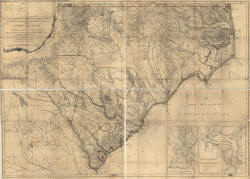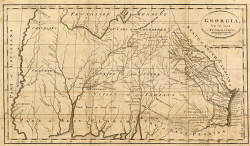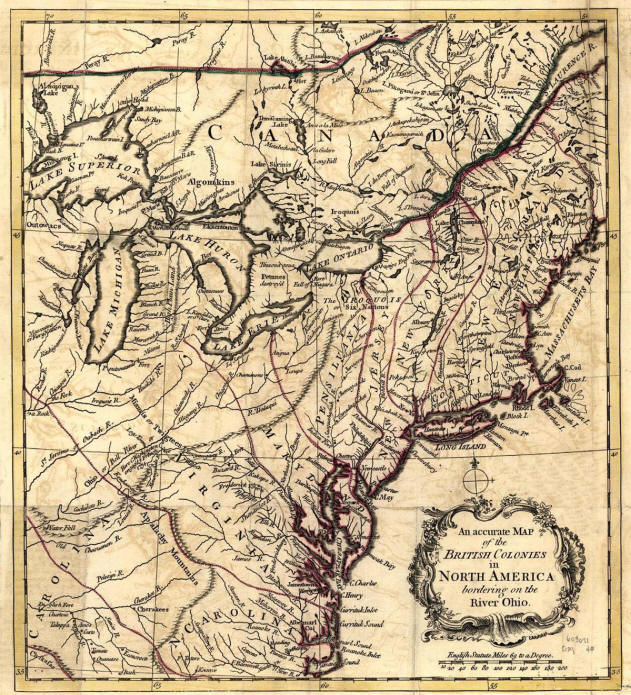Original Thirteen Colonies
|
|
This Site:
|
Map of the Original Thirteen States
Settlements in the new world were made in the following order: St. Augustine, Florida, was settled by Spaniards, under Pedro Menendez, 1565, and was the first European settlement. It was occupied by the Spaniards, except for a few years, until Florida passed from their control. While Florida was the area first settled by Europeans, it was not one of the original 13 colonies, as it was controlled by Spain. (See History of Florida) Virginia
New York
In 1623 Holland sent 30 families which started a settlement there. This settlement formed the basis for the State of New York (The name was changed from New Netherlald to New York when control passed to the British). Massachusetts
New Hampshire
Maryland
Connecticut
Rhode Island
Delaware and Pennsylvania
The (present) State of Delaware remained in possession of the Dutch, and afterwards of the English, until it was purchased by William Penn, in 1682, and annexed to PENNSYLVANIA. So it remained until the Revolution as "the Territories," when it became the present State of DELAWARE. New Jersey
Its territory was claimed to be a part of New Netherland by the Dutch. A few Dutch traders from New Amsterdam seem to have settled in about 1620, and in 1623 a company led by Captain Jacobus May built Fort Nassau, at the mouth of the Timmer Kill, near Gloucester. There four young married couples, with a few others, began a settlement the same year. North Carolina and South Carolina
Georgia
Colonial HistoryThe first English colony settled in America was the one sent in 1585 by Sir Walter Raleigh. Raleigh dispatched Sir Richard Grenville, with seven ships and lots of people, to form a colony in Virginia. Ralph Lane was to serve as their governor. Grenville left 107 men at Roanoke Island to form a colony. The colony suffered from lack of supplies. The following year, Sir Francis Drake was sailing up the American Coast, and found them in distress. He generously provided them with supplies, a ship and small boats. He also left enough seamen to stay and further explore the country. The generosity was accepted, but a storm shattered his vessels, and discouraged the colonists. They decided to take passage for home with Drake. The colony sailed from Virginia June 18, 1586, and arrived at Portsmouth, England, July 28. Madame de Guercheville, a pious lady in France, eager to convert the American Indians, convinced De Monts to surrender his patent. She then obtained a charter for "all the lands of New France." In 1613 she sent out missionaries. They sailed from Honfleur March 12, and arrived in ACADIA. Her agent proceeded to Port Royal (now Annapolis), where he found only five persons, two of whom were Jesuit missionaries who had been sent earlier. They went to Mount Desert Island. Just as they had begun to find provisions, they were attacked by SAMUEL ARGALL, of Virginia. They made some resistance, but were overwhelmed and had to surrender. One of the Jesuits was killed, several were wounded, and the rest were made prisoners. Argall took fifteen of the Frenchmen, besides the Jesuits, to Virginia; the remainder sailed for France. This success motivated the governor of Virginia to send an expedition to destroy the power and influence of the French in Acadia, under the argument that they were encroaching upon the rights of the English. Argall sailed with three ships for the purpose. He arrived at St. Saviour, and broke up a cross the Jesuits had set up there. He sailed to St. Croix and destroyed the remains of De Mont's settlement; and then he went to Port Royal and burned what was left of that town. The English government did not approve of his actions, nor did the French government resent it. Though the revolution in England (1688) found supporters among the Low Churchmen and Nonconformists there, who composed the English Whig party, the high ideas which William entertained of royal authority made him naturally coalesce with the Tories and the High Church party. As to the government of the colonies, he continued the oppressive policies of his predecessors. The colonial assemblies had hastened to enact in behalf of the people the Bill of Rights of the Convention Parliament. To these William gave frequent and decided negatives. The colonists' attempt to gain the writ of habeas corpus was also vetoed by the King. He also continued the prohibition of printing in the colonies. Even men of liberal tendencies, like Locke, Somers, and Chief-Justice Holt conceded prerogatives to the King in the colonies which they denied him at home. The most renowned jurists of the kingdom had not yet understood the true nature of the connective principle between the parent country and her colonies. As early as 1696 a pamphlet circulated in England suggesting Parliament should tax the colonies. Two pamphlets appeared in reply, arguing against the right of Parliament to tax the colonies, because they had no representative in Parliament to give consent. From that day the subject of taxing the colonies was a question frequently discussed, but not attempted until seven decades later. After the ratification of the treaty of Paris in 1763, the British government resolved to quarter troops in America at the expense of the colonies. The money was to be generated by a tax on foreign sugar and molasses, and by stamps. It was determined to tax the American colonists in a way which Walpole feared to undertake. A debate arose in the House of Commons on the right of Parliament to tax the Americans without allowing them to be represented in that body. The question was decided by an almost unanimous vote in favor of taxation. " Until then no act, avowedly for the purpose of revenue, and with the ordinary title and recital taken together, is found on the statute-book of the realm," said Burke. " All before stood on commercial regulations and restraints." Then the House proceeded to consider the STAMP ACT. In 1697 the right of appeal from the colonial courts to the King in council was sustained by the highest legal authority. By this and the establishment of courts of admiralty, England acquired a judicial control over the colonies, and with it a power of bringing her supreme authority to bear on both the colonies, and the colonists. At the beginning of the French and Indian War (1754), the period
when the American people "set up for themselves" in political and
social life, there was no exact count of the inhabitants; but
from a careful examination of official records, Mr. Bancroft
estimated the number as follows:
At this period the extent of the territorial claims of England and France was well defined on maps published by Evans and Mitchell in 1754. The British North American colonies stretched coastwise along the Atlantic about 1,000 miles, but inland their extent was very limited. New France extended over a much wider space, from Cape Breton to the mouth of the Mississippi River. The English colonies at that time had a population of 1,485,634, of whom 292,738 were negroes. The French were about 100,000 in number, but they had strong alliances with the Indians. The Indians populated the region on the interior edge of the British colonies. The Indians were frustrated with the constant encroachments and poor treatment by the English, were always ready for war. The French and Indian War, and the conflicts with England revealed to the colonists their innate strength. During these confrontations, disease and weapons had claimed 30,000 of the colonists. They had also spent more than $16,000,000, of which $5,000,000 had been reimbursed by the British Parliament.
The colonists began to demand a position of political equality with
their fellow subjects in England, and were ready to maintain their
rights through armed struggle. There was a provision in the first bill for the maintenance of a standing army in the colonies and allowing the crown to establish a general civil list; setting the salaries of governors, judges, and other officers, with the salaries to be paid by the crown, making these officers independent making of the people of the colonies. In striking a balance of losses and gains in the matter of parliamentary taxation in America, it was found in 1772 that the expenses on account of the Stamp Act exceeded $60,000, while it had raised only $7,500. The tea tax had been even worse. The whole tax revenue from the colonies for the previous year for duties on teas and wines amounted to no more than about $400, while ships and soldiers for the support of the tax had cost about $500,000; and the East India Company had lost the sale of goods to the amount of $2,500,000 annually for several years. After the proclamation of King George III., in 1775, Joseph Hawley, one of the stanch patriots of New England, wrote to Samuel Adams : " The eyes of all the continent are on your body to see whether you act with firmness and intrepidity-with the spirit and dispatch which our situation calls for. It is time for your body to fix on periodical annual elections-nay, to form into a parliament of two houses." This was the first proposition for the establishment of an independent national government for the colonies. On April 6, 1776, the
Continental Congress,
by resolution, threw open their ports to the commerce of the world "
not subject to the King of Great Britain." This was a declaration of
absolute free trade, and the act was a virtual
declaration of
independence. Map of the 13 American Colonies from 1755 |
|
|
||
|
|
Site Copyright 2003-2018 Son of the South. For Questions or comments about this collection, contact: paul@sonofthesouth.net |
|
|
Are you Scared and Confused? Read My Snake Story, a story of hope and encouragement, to help you face your fears. |
||
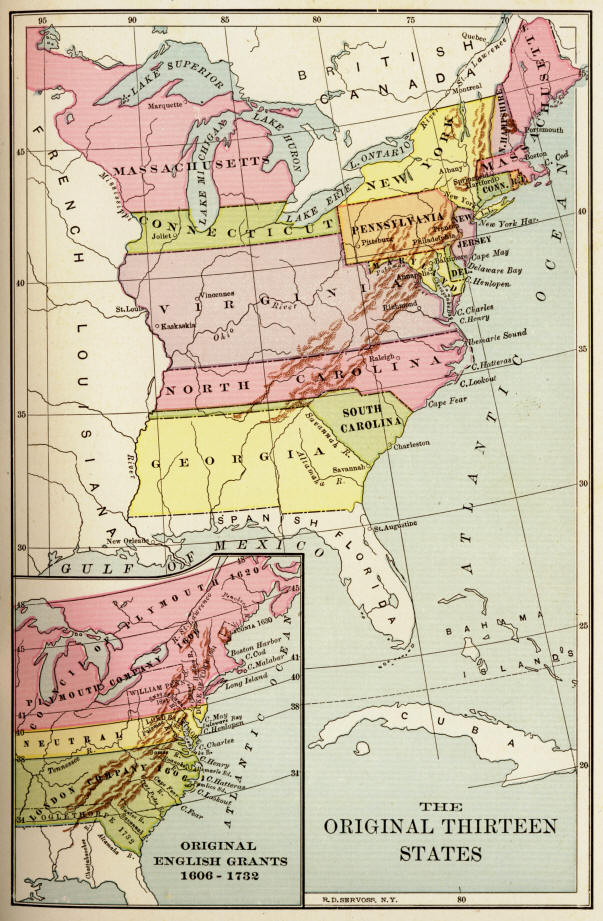
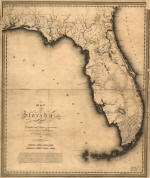
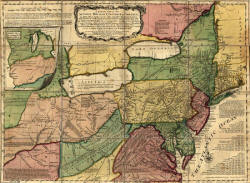
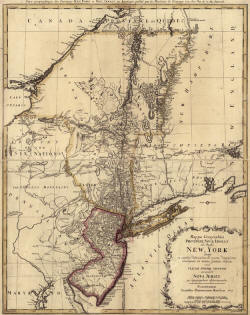
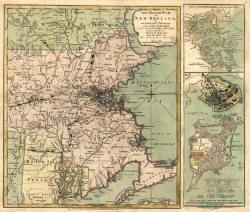
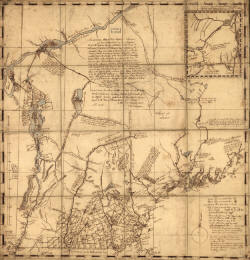
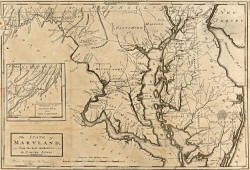
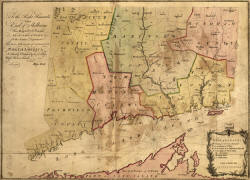
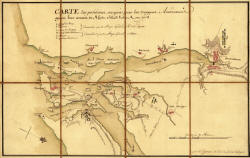
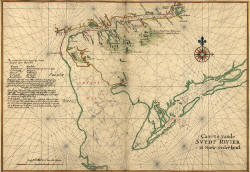
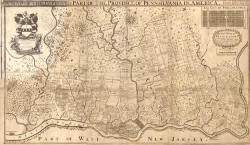
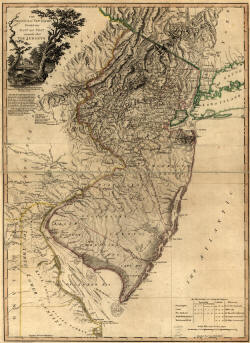 New Jersey
New Jersey